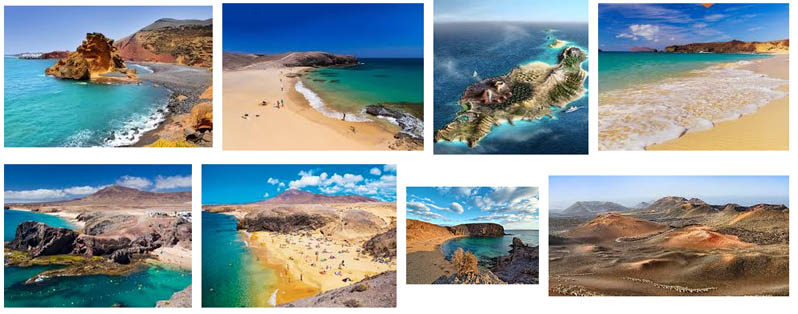 Tahiche The town itself is not very interesting, however, you definitely have to visit the Fundación de Cesar Manrique -museum, which was built in the house of the famous artist on his initiative. It's hard to expect, that people who postulate a return to nature live in an ordinary building – Manrique has incorporated his traditional white house, House Taro de Tahiche, into the fields of solidified lava, partly also using volcanic caves. The visit gives you a taste of it, what can be seen later in Jameos del Agua.
Tahiche The town itself is not very interesting, however, you definitely have to visit the Fundación de Cesar Manrique -museum, which was built in the house of the famous artist on his initiative. It's hard to expect, that people who postulate a return to nature live in an ordinary building – Manrique has incorporated his traditional white house, House Taro de Tahiche, into the fields of solidified lava, partly also using volcanic caves. The visit gives you a taste of it, what can be seen later in Jameos del Agua.
Cueua de los Verdes In the distance from Arriety, o 4 km Cave of the Greens (The Green Cave) looking for green in vain – its name comes from the surname of the shepherds, to which she belonged in the past. The grotto is open to visitors in 1964 r. it is an almost two-kilometer labyrinth of corridors and caves, effectively illuminated. During the almost hour-long trip, you can see different colored lava layers and interesting rock formations.
Mirador del Rio in the north of Lanzarote is a former artillery position, which in 1973 r. Cesar Manrique transformed into a vantage point suspended between heaven and earth, being one of the most beautiful places in the Canary Islands. On entering a building resembling a bunker, I guess no one is expecting the views, from the panoramic window to the azure waters of the El Rfo isthmus, behind which are the islands of the Chinijo archipelago, with La Graciosa in the foreground.
Lanzarote people, when asked to describe their island in just one sentence, they answer, that it is an island with character. It's hard to disagree with them - a specific volcanic landscape cannot be confused with any of the other islands of the archipelago or any other corner of the planet. For quite a long time, the islanders have been careful, that they live in the ugliest place on Earth, they changed their mind thanks to Cesar Manrique, who with your designs
emphasized the unique beauty of the volcanic island. Paradoxically, these are the volcanoes, whose outbreaks in the 18th century. forced more than half of the population to emigrate, are today its greatest treasure and tourist attraction. There are as many of them on any other island as here. Surrounded by fields of solidified lava, they make an impression, as if they had just exploded, because they did not have enough time to grow vegetation (the last eruption in Lanzarote was in 1824 r., and the afforestation process takes at least several hundred thousand years).